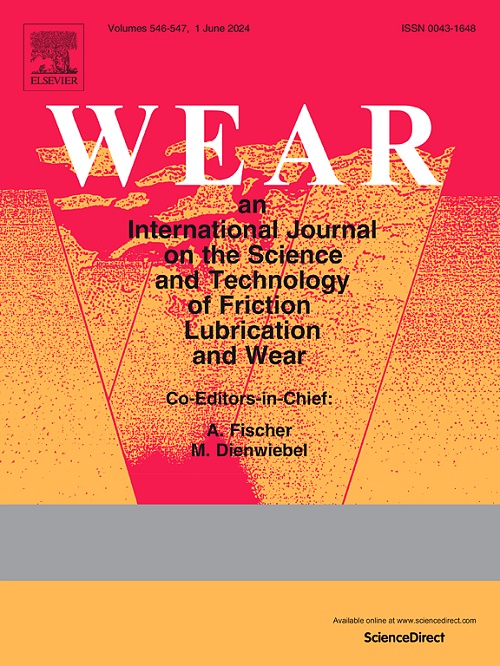Surface preparation and wear mechanism of high-strength microtextured aluminum alloys using combined cutting and ultrasonic rolling process
IF 5.3
1区 工程技术
Q1 ENGINEERING, MECHANICAL
引用次数: 0
Abstract
Cutting processes can form microtextures with alternating peaks and valleys on the surface, while ultrasonic rolling can cause material flow from peaks to valleys and bring about plastic deformation strengthening, which avoids the reduction in surface strength associated with microstructures processed by material removal. This study utilizes a combined approach of cutting and ultrasonic rolling process (CURP) to create high-strength, wear-resistant microtextured surfaces on aluminum alloys. The research investigates the principles of point contact wear on microtextured surfaces. Models were developed for the contact area between cutting roughness peaks and the rolling element to analyze the shape of the contact area and the forces acting on the rolling element under different processing parameters. Experiments were conducted with single and multiple passes of ultrasonic rolling under different cutting parameters to establish the relationship between indentation size and processing parameters. Friction and wear experiments were performed to explore the wear mechanisms on surfaces with microtexturing. The results revealed that the length of the indentation is positively correlated with the cutting feed rate. At the same indentation depth, a larger feed rate results in a longer indentation length. As the angle φ between the rolling direction and the cutting mark decreases, single indentations shift from symmetrically distributed along the midline of the rolling to one side. When the feed rate is high and the overlap rate is low, the roller-burnished surface exhibits a uniformly distributed sector-shaped pit area. However, with an overlap rate of 25 %, sector-shaped pits disappear under smaller feed rates. Microtextured surfaces are less prone to microcracks and material peeling abrasion under light loading conditions. With an increase in contact stress during heavy loading, surfaces with higher degrees of work hardening, such as the CURP specimens, become more susceptible to material peeling.
求助全文
约1分钟内获得全文
求助全文
来源期刊

Wear
工程技术-材料科学:综合
CiteScore
8.80
自引率
8.00%
发文量
280
审稿时长
47 days
期刊介绍:
Wear journal is dedicated to the advancement of basic and applied knowledge concerning the nature of wear of materials. Broadly, topics of interest range from development of fundamental understanding of the mechanisms of wear to innovative solutions to practical engineering problems. Authors of experimental studies are expected to comment on the repeatability of the data, and whenever possible, conduct multiple measurements under similar testing conditions. Further, Wear embraces the highest standards of professional ethics, and the detection of matching content, either in written or graphical form, from other publications by the current authors or by others, may result in rejection.
 求助内容:
求助内容: 应助结果提醒方式:
应助结果提醒方式:


